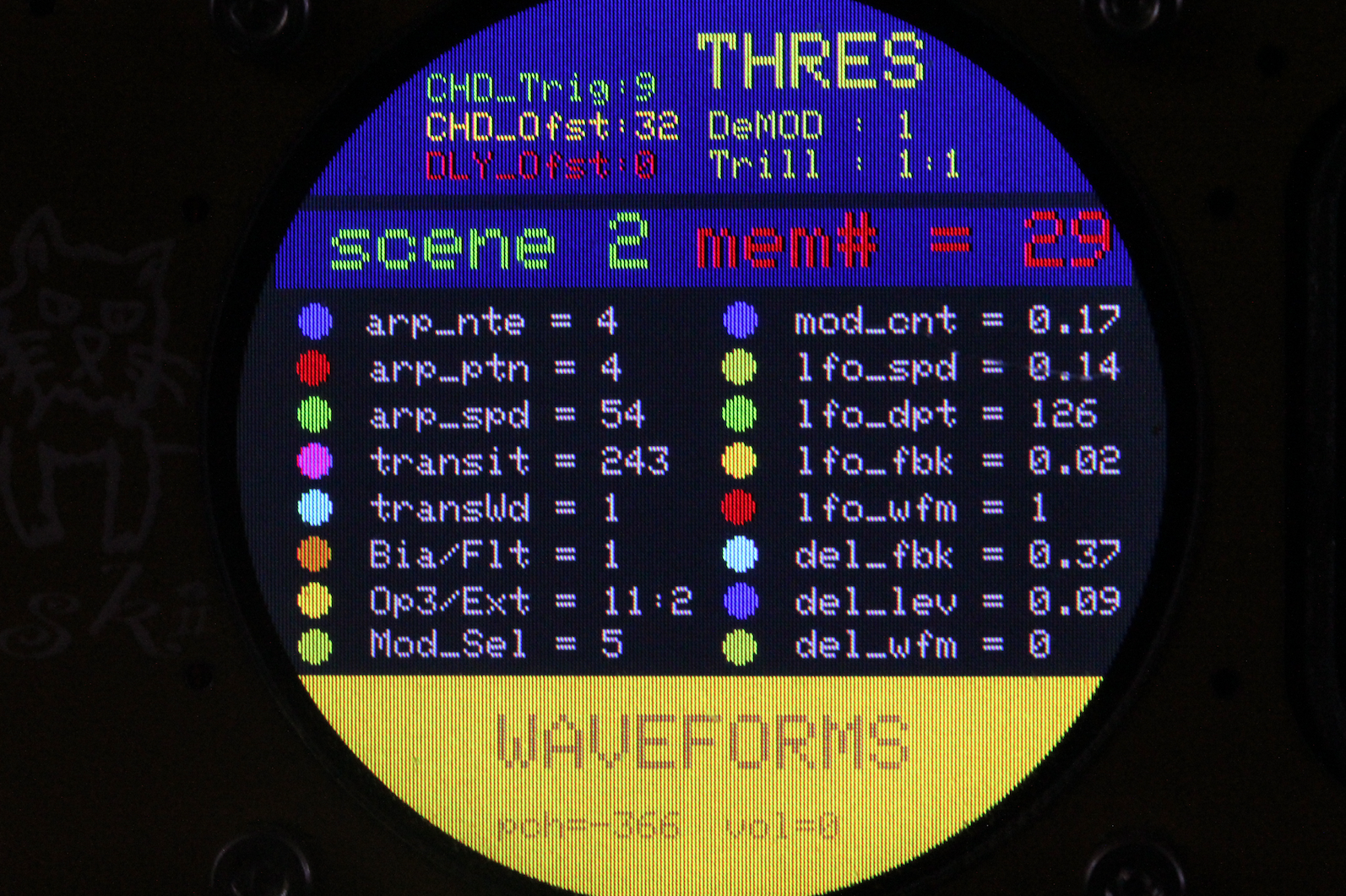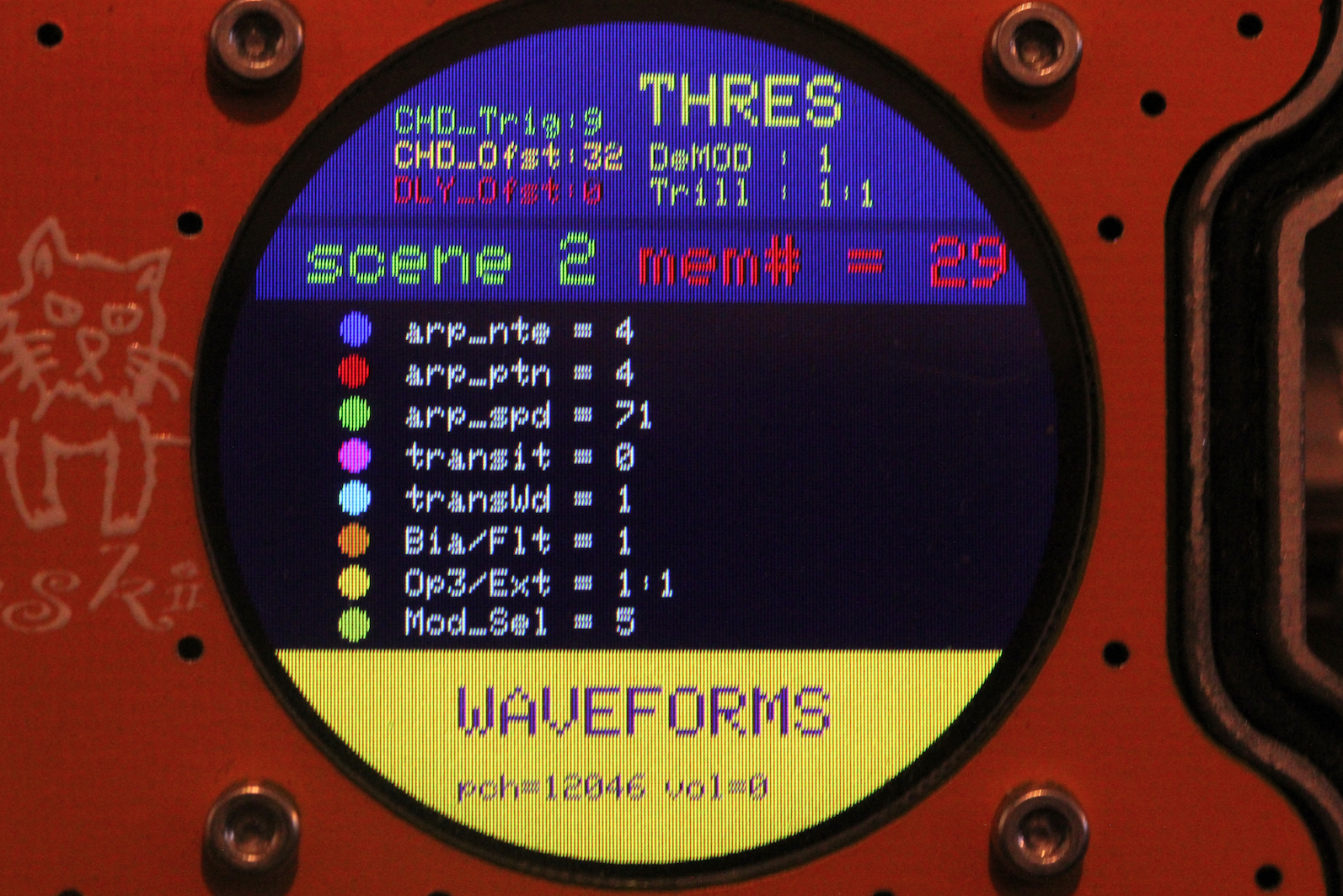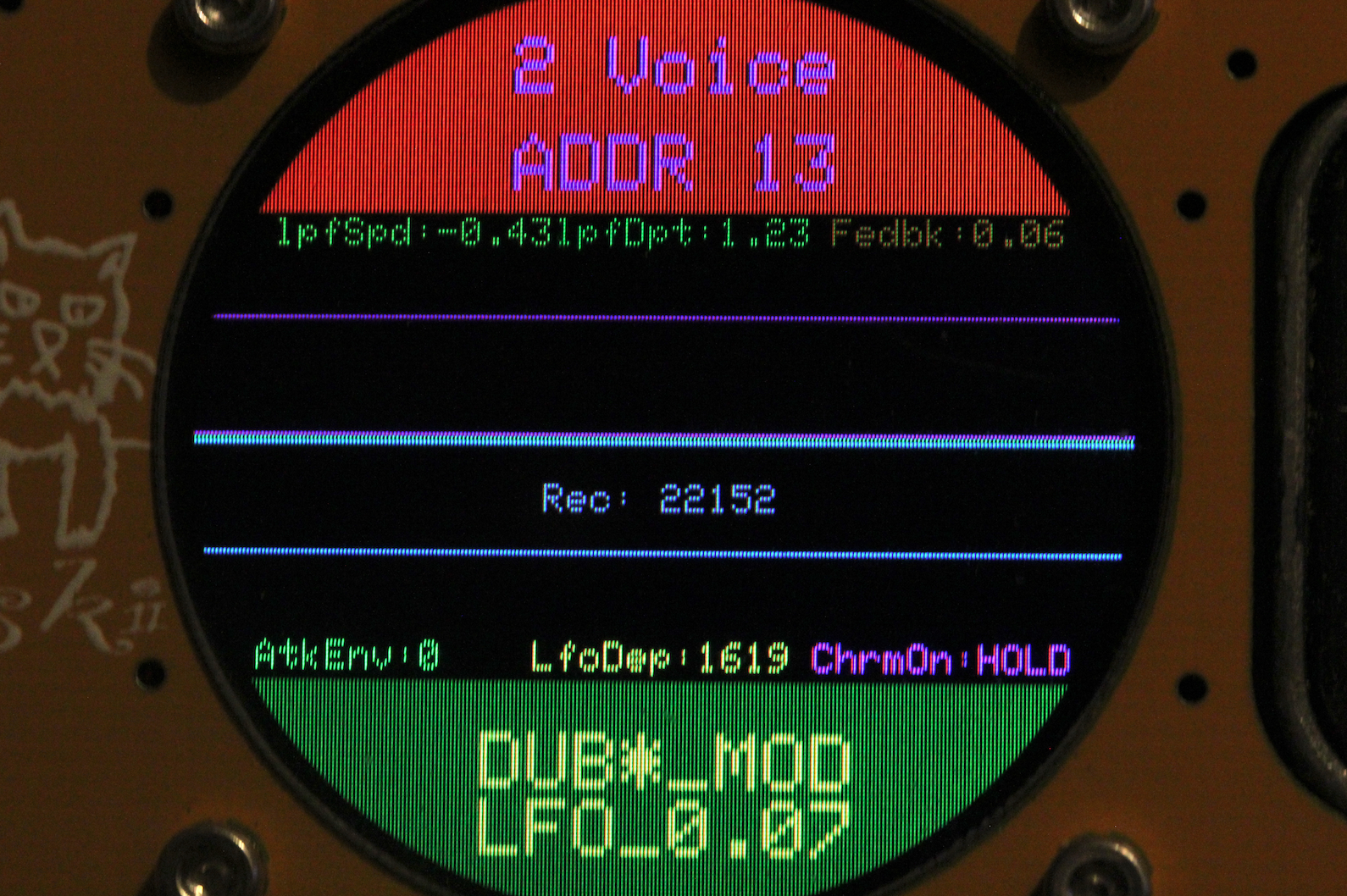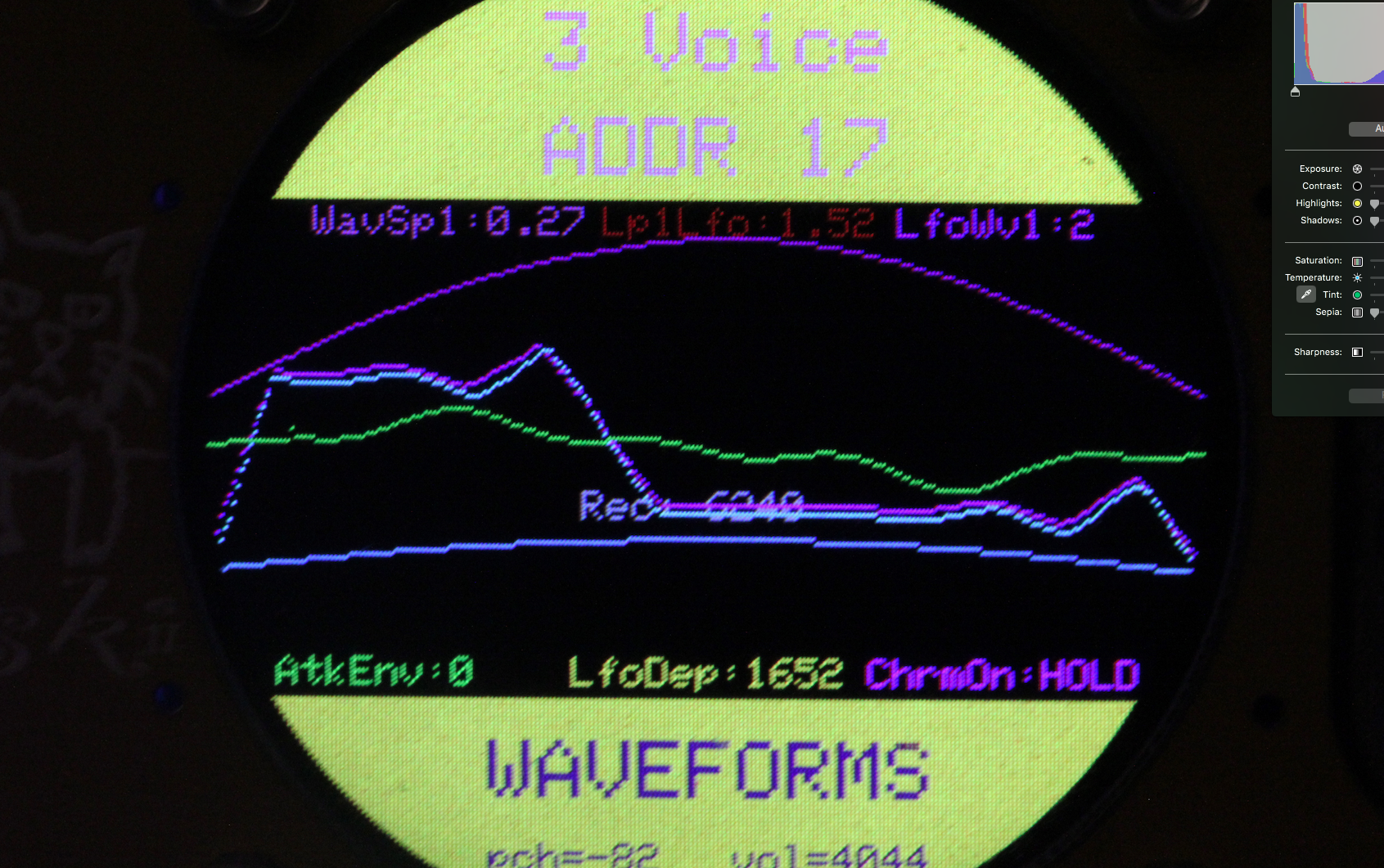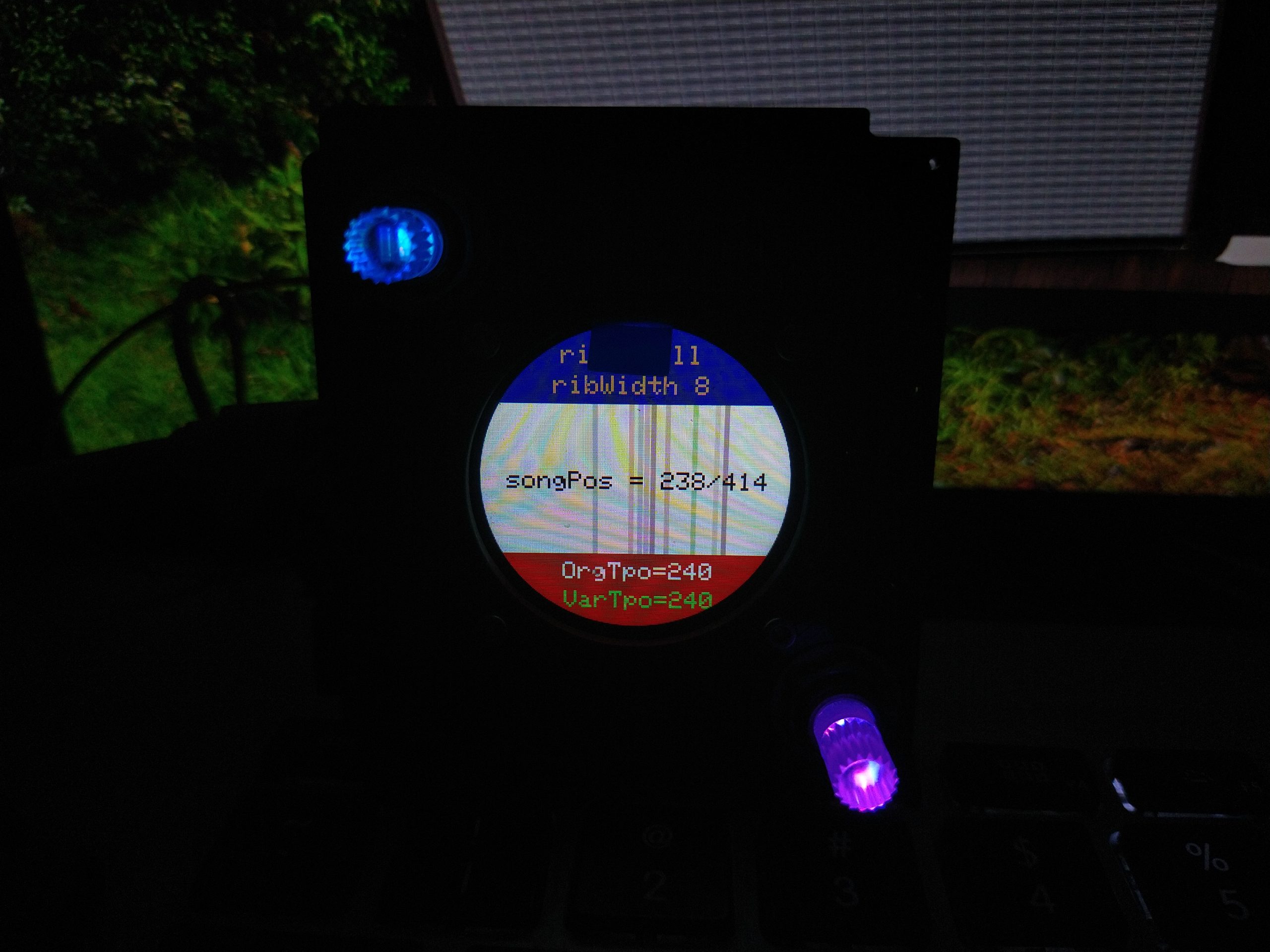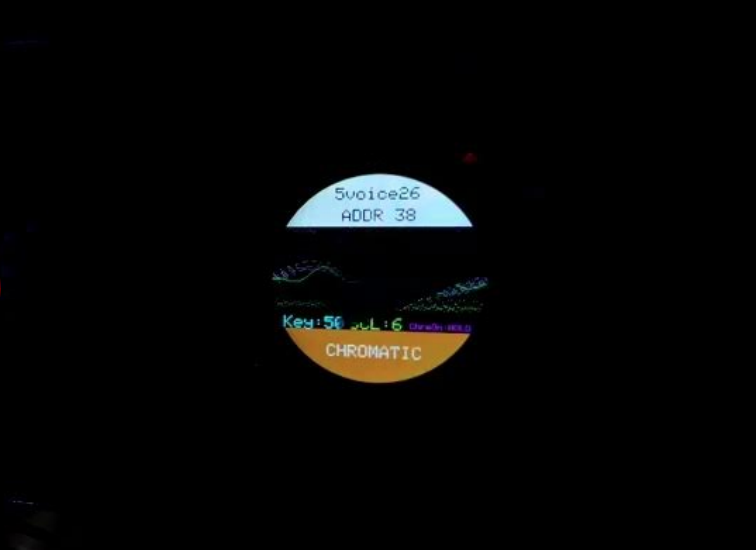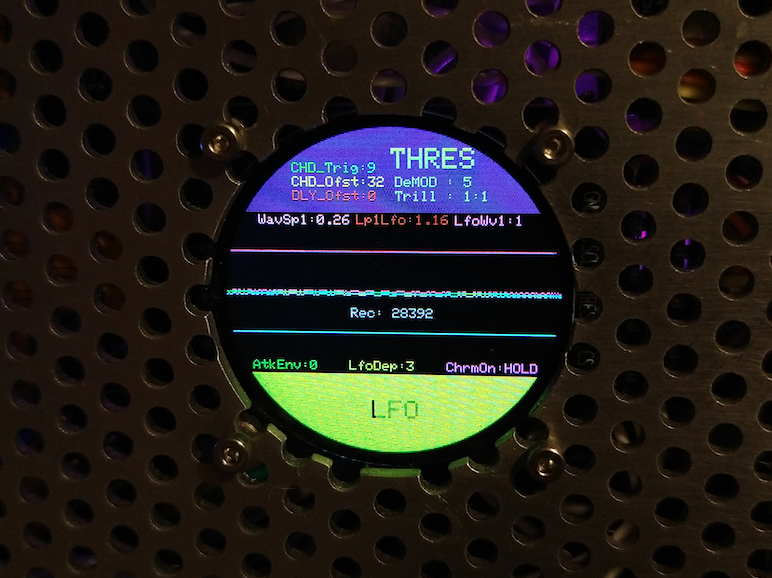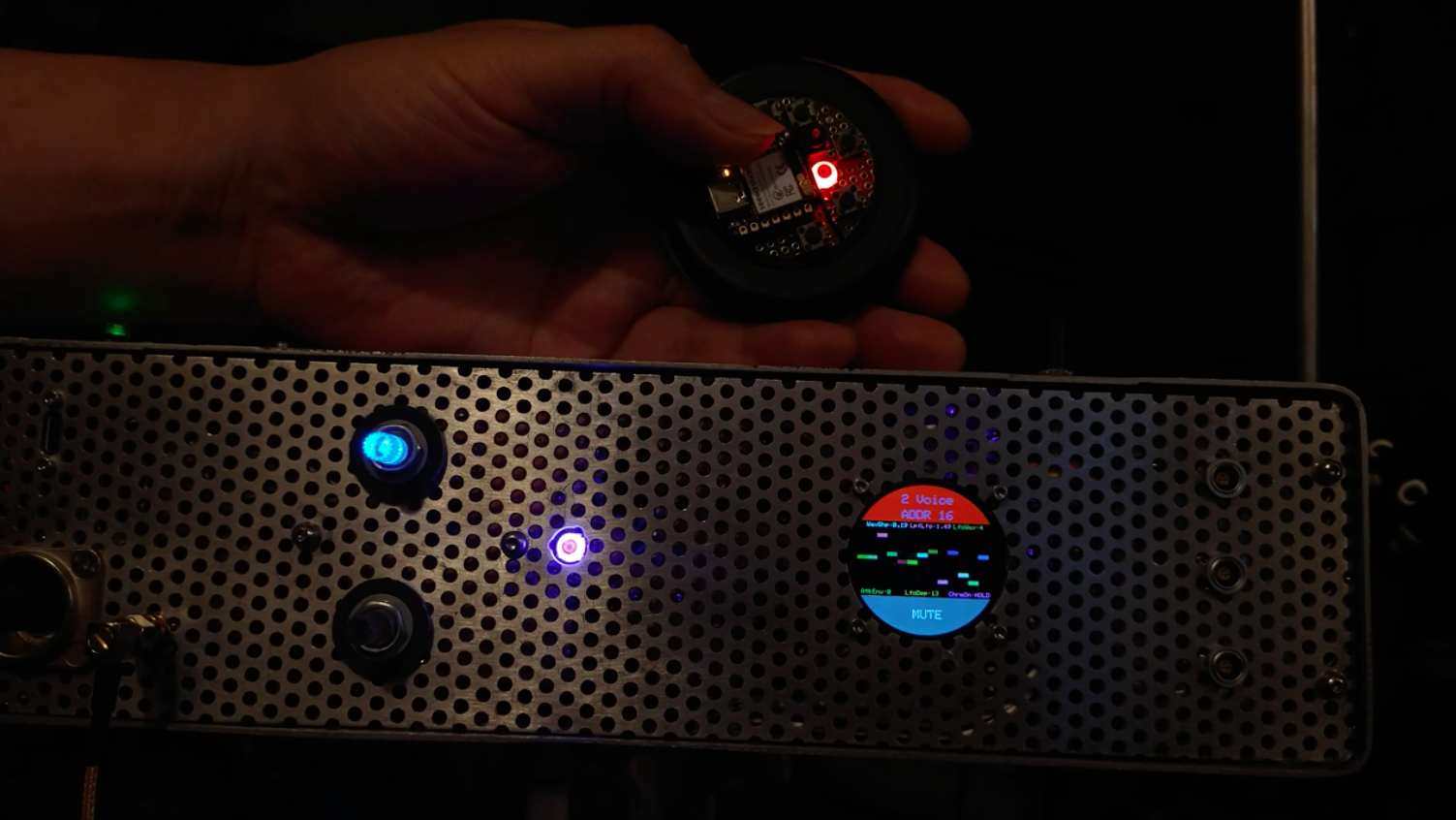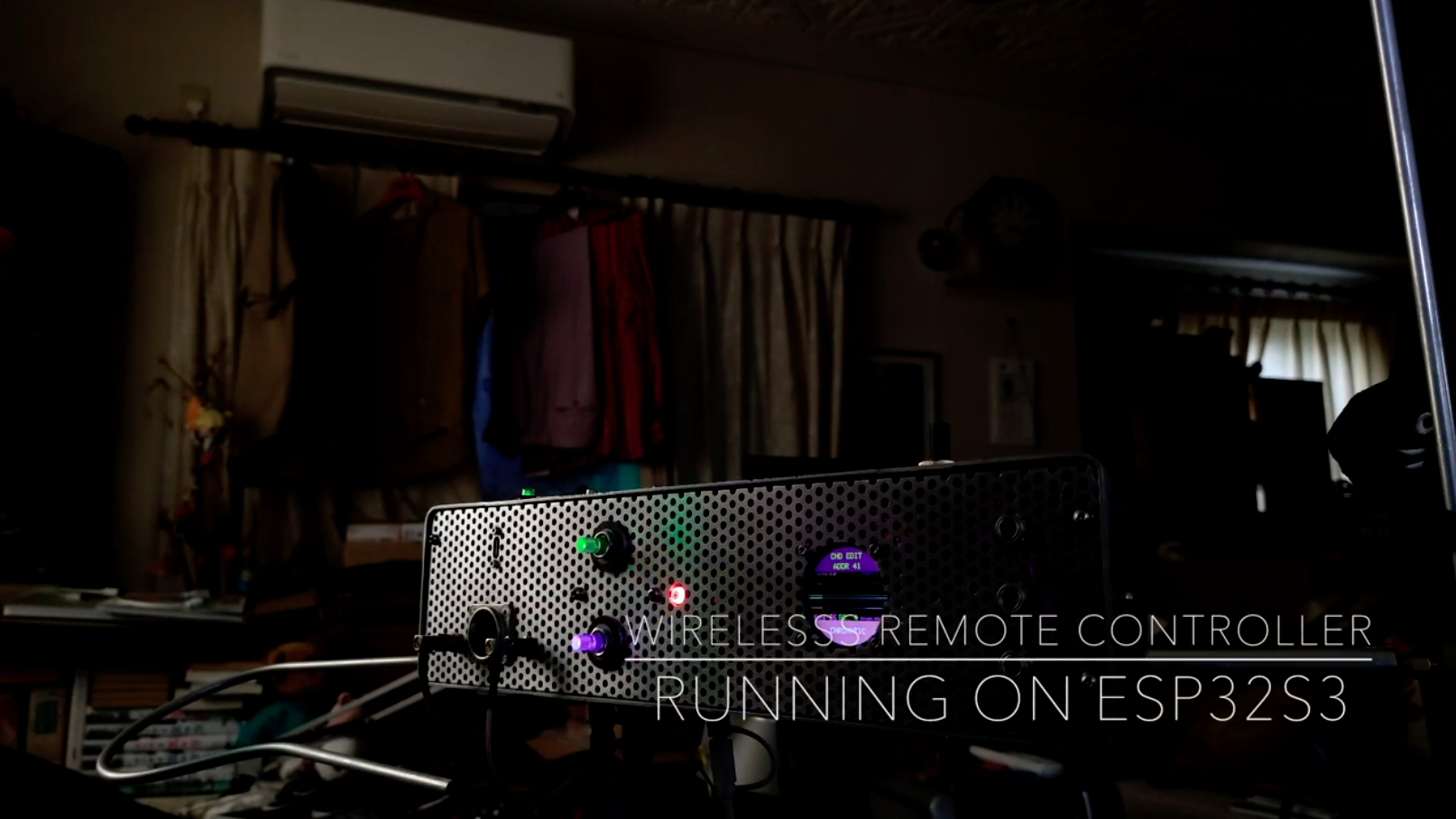A major error of “mishandling of global variables” placed in the LPF was discovered and corrected in the relevant section. The variable that buffers the audio in the code that builds the LPF was shared among the outputs of Wavetable, resulting in a near-monaural sound output configuration, but the problem was solved by adding a
A function to check various settings for each SceneMemory
is implemented in mode2 = page# 9.
is implemented in mode2 = page# 9.
Adding “Depth” to LFO parameters
After adding “Depth” to Modulator’s parameters, I put together the display of parameters related to LFO on one page. I came up with the idea of linking the assignment of the Depth setting parameter in the Modulator to the DelayTimeRange parameter in the 9th item of mode4. The LCD display has Rate/Depth/Feedback in place. The
After adding “Depth” to Modulator’s parameters, I put together the display of parameters related to LFO on one page. I came up with the idea of linking the assignment of the Depth setting parameter in the Modulator to the DelayTimeRange parameter in the 9th item of mode4. The LCD display has Rate/Depth/Feedback in place. The
Adjust the deviation value of the data referenced by the interpolation mechanism of CombFilter.
Adjustments were made to narrow the deviation value of the data referenced by the interpolation mechanism from the delay buffer of the CombFilter. The variable region where the LFO drives is switched according to the delay time setting of the ring buffer that makes up the CombFilter. Calculated 1/8 of the variable region using BitShift
Adjustments were made to narrow the deviation value of the data referenced by the interpolation mechanism from the delay buffer of the CombFilter. The variable region where the LFO drives is switched according to the delay time setting of the ring buffer that makes up the CombFilter. Calculated 1/8 of the variable region using BitShift
How to get the number of sequence steps in SMF
Although the command for pick up how many sequence steps on the SMF on the library does not works properly, I have to add the codes for capturing the value of the sequence steps. First, a flag is set to allow writing to the register in the mode of selecting SMF, and then the mode
Although the command for pick up how many sequence steps on the SMF on the library does not works properly, I have to add the codes for capturing the value of the sequence steps. First, a flag is set to allow writing to the register in the mode of selecting SMF, and then the mode
The SMF_PLAYER for SolenoidBell system is working properly.
The confirmed problem is a mysterious phenomenon in which the upper limit of the BPM setting value is limited to 120 BPM, but this has been normalized at some point in the process of checking the UI. However, the cause of the problem must be identified due to the suspicious the behavior. For the time being,
The confirmed problem is a mysterious phenomenon in which the upper limit of the BPM setting value is limited to 120 BPM, but this has been normalized at some point in the process of checking the UI. However, the cause of the problem must be identified due to the suspicious the behavior. For the time being,
Chord Sequencer records with free-run status.
The parameter on the left side of the LCD in “THRES” mode, in the center column indicates the starting address of the 16-step chord sequencer. The timing of the trigger signal to drive the steps is set by the threshold point = volume value of the left hand position. This is a recording of the
The parameter on the left side of the LCD in “THRES” mode, in the center column indicates the starting address of the 16-step chord sequencer. The timing of the trigger signal to drive the steps is set by the threshold point = volume value of the left hand position. This is a recording of the
Access to the parameter of the Chord Sequencer
A function to set the starting address of the Chord Sequencer was implemented on the wireless remote control. As a result of changes to the program that spilled over to the main unit side, the amount of work was greater than expected. In order to execute a circular code with the end of the address
A function to set the starting address of the Chord Sequencer was implemented on the wireless remote control. As a result of changes to the program that spilled over to the main unit side, the amount of work was greater than expected. In order to execute a circular code with the end of the address
Consider the parameters to be implemented in LaVoixski@WirelessRemoteController
SW6, located on the lower left side of the remote controller, was assigned to “record switch only,” but in the first round of program modification, the specifications were changed to allow page switching with HOLD while keeping this functionality. However, as a result of operational tests, it was found that page switching was time-consuming. In
SW6, located on the lower left side of the remote controller, was assigned to “record switch only,” but in the first round of program modification, the specifications were changed to allow page switching with HOLD while keeping this functionality. However, as a result of operational tests, it was found that page switching was time-consuming. In
Uploaded a re-recorded version.
Although it is difficult to understand from the video, the wireless remote control is set to six pages, and uses a forward-only switching mechanism triggered by HOLD (LongPush). This is very difficult to use, and I would like to use a dial to switch pages if possible, but there are not enough inputs in the MCU
Although it is difficult to understand from the video, the wireless remote control is set to six pages, and uses a forward-only switching mechanism triggered by HOLD (LongPush). This is very difficult to use, and I would like to use a dial to switch pages if possible, but there are not enough inputs in the MCU
